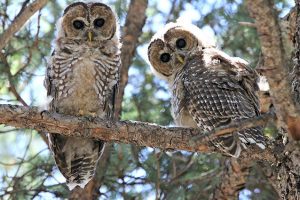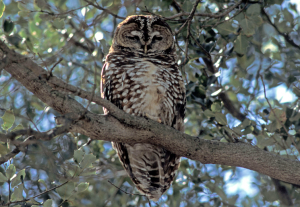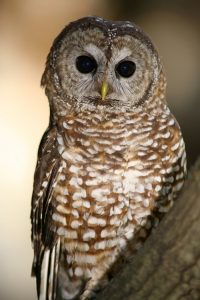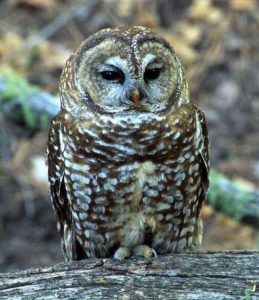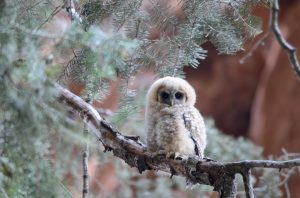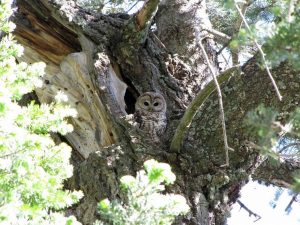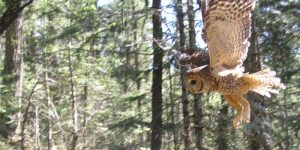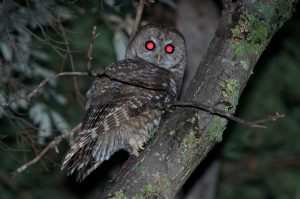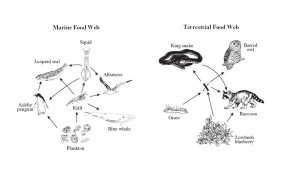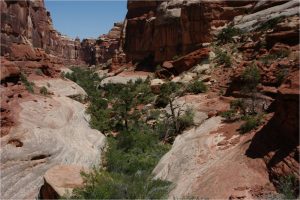Mexican Spotted Owl
Mexican spotted owl is a subspecies of spotted owl occurring in the United States and Mexico. Although the smallest among the spotted owls, it is one of the largest owls found in North America.
Scientific Classification
| Kingdom | Animalia |
| Phylum | Chordata |
| Class | Aves |
| Order | Strigiformes |
| Family | Strigidae |
| Genus | Strix |
| Species | Strix occidentalis |
| Scientific Name | Strix occidentalis lucida |
Quick Information
| Size | Height: 16-19 in Length: 17 in |
| Wingspan | 42-45 in |
| Weight | 1.2-1.4 lbs |
| Color | Brown with white spots on the head, abdomen, and back; dark eyes with brown tail marked with thin white bands |
| Distribution/Range | Southern Utah, Colorado, Arizona, New Mexico, West Texas (United States); northern and central Mexico |
| Habitat | Mixed-conifer and Madrean pine-oak forests; steep slopes, rocky cliffs |
| Sounds | Different types of barking, hooting, and whistling calls |
| Lifespan | 16 to 17 years |
| Diet | Woodrats, mice, red tree voles, red-backed voles, brush rabbits, snowshoe hares, bats, pocket gophers, smaller owls, other birds, amphibians, insects |
| Mating Season | February-March |
| Clutch Size | 2 – 4 eggs |
| Number of Broods | 1 |
| Incubation Period | Around 2 months |
| IUCN Conservation Status | NearThreatened |
Behavior
The nocturnal subspecies is known as “perch and pounce” predator since it locates its prey from a high perch, then pounces on it and holds its prey with its talons. It is solitary except for interactions with its mate and young ones. Adult males and females use a signal call to mark and defend their territories. Mated pairs use a whistling sound to stay in contact while four hooted notes are used when the male delivers food to his partner. Roosting members often preen themselves and each other.
Breeding and Nesting
Mexican spotted owl is monogamous, forming long-term bonds and remaining in the same home range year-round. Mating pairs start roosting and interacting 4 to 6 weeks before eggs are laid. The female incubates her eggs while the male gathers food for her.
The male selects the nest site usually in old forests covered by dense tree canopy. He may choose a broken treetop or hollow tree-trunk, a mistletoe tangle, or an abandoned nest of a squirrel or a bird of prey.
Life-cycle
After hatching, the young ones remain in the nest for the first 4 to 5 weeks. When out of the nest, the young ones stay close to their parents for another 2 to 3 months, becoming independent by late summer. On reaching adult weight, it leaves its natal area in September and October.
Interesting Facts
- An individual may not breed every year while some do not breed for five to six years.
- When food is abundant, it may cache prey in places like moss-covered tree limbs, under fallen logs, broken stumps, or among moss-covered rocks.
- Scientists study the spotted owls to have an idea about the health of their native ecosystem.
References:
Published on January 20th 2017 by Sajal Datta under Coniferous Forest Animals.
Article was last reviewed on 9th May 2023.


